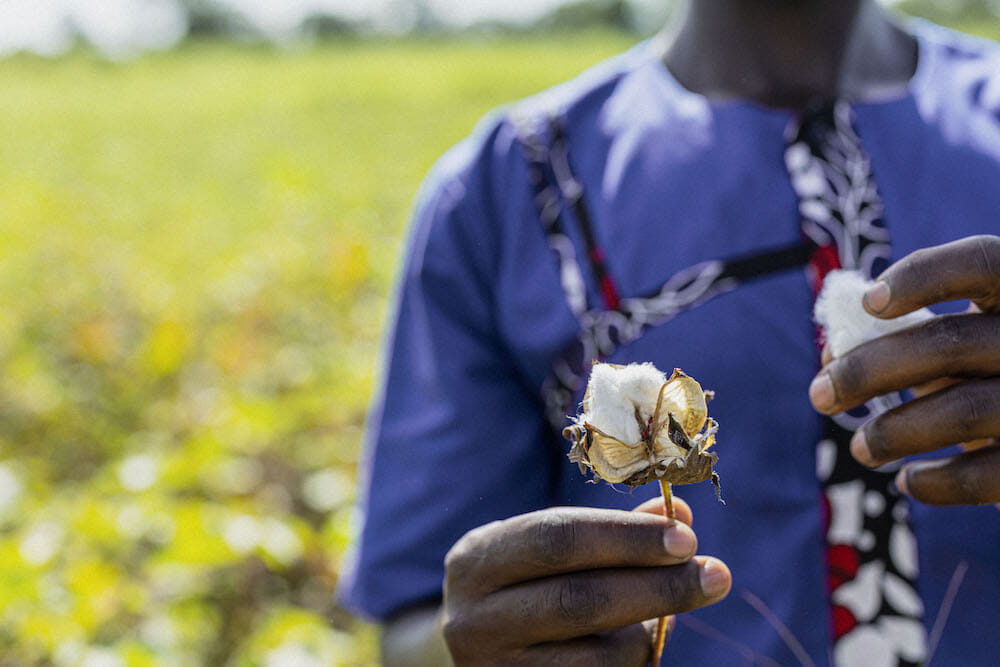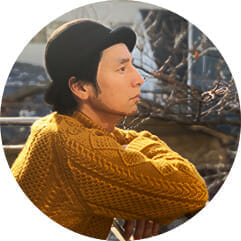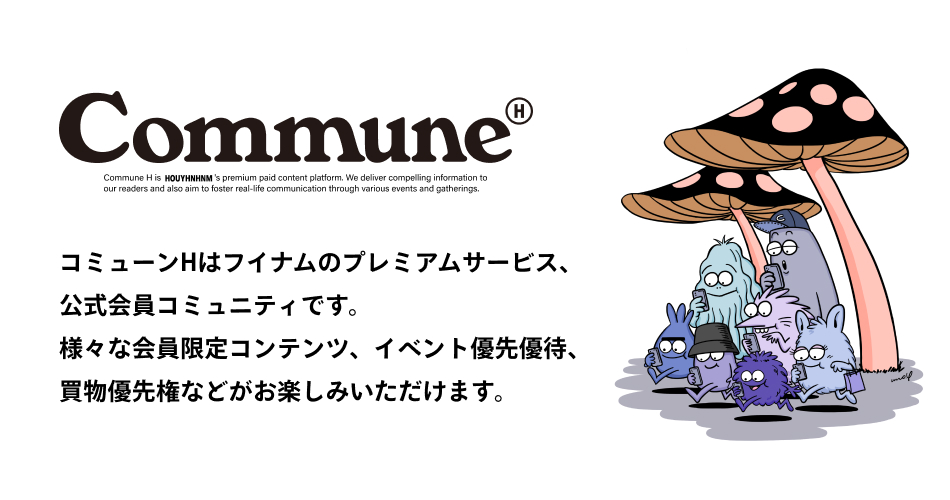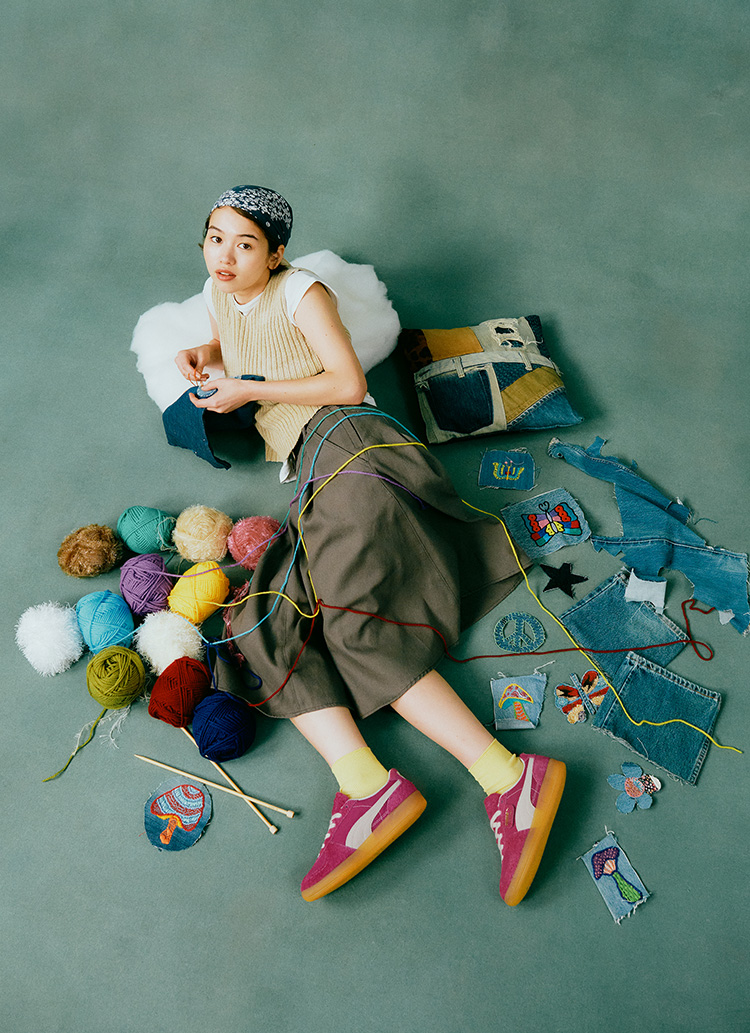Traceability is a combination of the words "trace" and "ability," and refers to the ability to visualize when, where, how, by whom, and why a product was made, and to be able to trace it from raw material procurement to production, consumption, and disposal.
Combining traceable produce from farmers around the world with digital technology, the company connects buyers and producers to provide a new ethical consumption experience.farmers 360°link (hereafter: FL360)".
What exactly is "FL360," which "Ron Herman" and "Pilgrim Surf+Supply" have already endorsed and participated in?
What is farmers 360° link?
The company works with cotton producing regions in the three provinces of Zambia.
Global environmental pollution is a major issue for the apparel industry. Each manufacturer is tackling the issue of environmental impact during production and the massive waste that results from unsold products. Another major issue is the labor problem. Low wages, long working hours, and working environment problems are often seen in the news.
We spoke with Nozomi Kobayashi and Mizuki Akiho of Mitsui & Co., Ltd. who are project members of FL360, a platform that is one solution to this problem.
———
Please tell us about FL360.
Kobayashi: This platform connects producers and consumers through fashion. It not only connects with cotton farmers in Zambia, Africa, and manages the process from the seed stage to harvesting and processing, but also utilizes blockchain to record and visualize the environmental and social impact of the products. Using the app, buyers can not only get to know the faces of the producers and their rural lifestyle and livelihood, but they can also follow and check the progress of their own choice of various programs to improve agricultural productivity and better livelihoods for the connected producers with a portion of the product price they paid. You can follow the progress of your choice of various programs to improve agricultural productivity and better livelihoods for your connected producers.
So the purchaser of the product is connected to the producer of the raw materials.
Akiho: The world of cotton has a very long supply chain, from raw cotton to the final product. But by using QR codes, buyers can not only connect with cotton producers, but also see and learn all about the production process. And by registering on line, they can also check to see if the program they have chosen is being implemented, so the story continues even after the product has been purchased.
By reading the QR code attached to the product, the purchaser can select a program to follow.
All manual labor. Agriculture with low environmental impact.
On average, each Zambian cotton farmer cultivates one hectare of cotton.
What is the current situation of cotton farmers in Zambia?
Kobayashi: Most are smallholder farmers with a few hectares per house, and the annual household income per family is often less than $1,000. I think there are about 500 million people like this in Africa, and not just in Zambia. They live without any infrastructure such as electricity, water, or gas.
Please tell us about the characteristics of cotton in Zambia.
Akiho: The farming method itself is environmentally friendly. Originally, non-GMO seeds are used, and a limited amount of synthetic pesticides are used appropriately. And since rain-fed agriculture does not use irrigation, and all plowing and harvesting is done by hand, with no tractors or other energy-intensive equipment, there are no direct CO2 emissions from farming. Compared to modern agriculture, it can be said to be very environmentally friendly in the first place. But once this is in the market, the price is determined only by the specifications of the cotton, so the current situation is that the value of cotton done by hand by people in Zambia is no different from those done by modern agriculture. But it is an agriculture that should be valued more. This is also something we would like to visualize.
I believe we can change the rural landscape."
Common dwellings in rural Zambia.
What are the benefits of receiving a portion of the product price back?
Kobayashi: As a simple and simplified example, let's say there are 150 farmers in one community. That would result in a collection of about 60 tons of raw cotton, and 24 tons of usable cotton after processing, which is the equivalent of one container. That is the equivalent of one container, or 68,571 T-shirts, using 350 grams per T-shirt. We will collect, say, $2 per piece from the sales price of that product. That would be about $137,000. This is quite a large amount of money that can be raised naturally by implementing this system. This is $914 per house, so we can make an impact equivalent to their annual income. With this amount of money, a lot can be accomplished. I believe we can change the rural landscape.
What specific actions are you going to take?
Kobayashi:We will decide on the content together with Mr. Brand. Farmers spend a lot of labor time in their daily lives, such as fetching water for daily use from distant water supply sites, picking up firewood for cooking, and so on. If we can install the necessary infrastructure for the community, such as electricity, water, and gas, this will save time, which in turn will free up time for knowledge and training to increase productivity and improve income. And children will be able to study after the sun goes down, which will open up new avenues for their future, right? We can also distribute stationery and textbooks. We can send teachers and provide school lunches. We can think of any number of programs to meet local needs, such as distributing safe and clean toilets, soap, etc.
With the development of the app, the operational work of local agents, which used to be done on paper, is now done electronically.
A future that will change as African farmers become richer.
What is the meaning behind the name "FL360"?
Akiyasu: One is to connect the thoughts and wishes of producers, consumers, land supply chain, and apparel companies in all directions, and the other is to build a better future by circulating thoughts and values among these people in a positive sense in both directions by drawing a 360° circle. The other is to build a better future by circulating thoughts and values among these people in a positive sense in both directions.
What is the goal of FL360?
Kobayashi: Our theme is "to create commercially sustainable businesses by solving social issues. By creating a system that creates a fair cycle, farmers' productivity will increase, their income will rise, and the economy will be revitalized, thereby expanding our own business options.
Through the FL360 system, which allows us to instantly connect with farmers, we can provide a variety of services to people and communities, and we can also generate revenue as a business. We want to create this cycle and make it a powerful business. We hope that we can contribute to the eradication of poverty, which is a major issue on a global level, and create a society that is good for the environment as well.
Ron Herman's vision for the future of choice.
We interviewed Ms. Masumi Abe, PR manager at Ron Herman, who participated in FL360 for the first time.
Can you tell us why you agreed to FL360?
Abe: Ron Herman aims to make the main materials used in its original items sustainable by 2025, and we were exploring various ways to achieve this goal. The first target was cotton, which accounts for more than 70% of our main materials. We have switched to organic cotton and recycled cotton, but we came across FL360 while looking for other sustainable cotton. We were also interested in cotton as a traceable cotton, since we often do not know who makes the raw materials for cotton.
Furthermore, I think that using "FL360" will allow customers who purchase the product to connect directly with the producer, and for them, it will be a good opportunity and experience to learn about the society and issues surrounding cotton. It is not only our desire to support the producers, but it also gives customers a reason to cherish a piece of clothing when they learn the background of the product they have purchased. As for "Lon Herman," we would like to make this a standard when choosing cotton in the future.
How did you set up the program?
Abe: We chose three products: fertilizers to increase cotton production, nutritional food for the children of the future, and solar panels to support infrastructure. We allowed customers to choose for themselves by registering through a QR code on a tag attached to the product.
Pilgrim Surf + Supply shifts its flagship items to traceable cotton.
Long sleeve T-shirts with pennant logo are available in three colors.
Pilgrim Surf + Supply" joined at the same time as "Ron Herman" and will develop products using "FL360" in 2023FW. We also interviewed the director, Mr. Takayuki Izumi.
Which products will use FL360?
Izumi: We are thinking of shifting this series of team T's to "FL360" in the future, starting with a long sleeve T-shirt with Pilgrim's iconic pennant logo design for 2023FW.
-What was the point of agreeing with "FL360"?
Izumi: In the past, we have been doing so-called donation-like efforts in other ways. For example, we have paid for shoppers and donated them to environmental groups, but the donation action is a one-way street. But the "FL360" project is connected to both sides. I thought it was a very valuable new option for choosing cotton. I think we can send a strong message as Pilgrim by making our signature team T-shirt in traceable cotton.
So we have heard from various stakeholders. I think it is good to start with what you can do. Sustainability is the most important thing.
Photo_Rai Shizuno / farmers 360°link
Text_Takuro Watanabe










